15 References To Previous Bond Films Found In Spectre
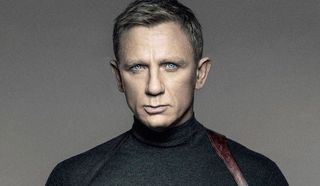
The latest James Bond adventure, Spectre, touched down in U.S. theaters this past weekend (it’s been out in the U.K. for a week or so), where it roundly trounced its closest box office competitor by roughly $30 million. Though the reviews haven’t been as over-the-moon as they were for the last installment, Skyfall, it’s already earned more than $296 million worldwide.
The 24th Bond film, Spectre is also hugely indebted to the rest of the franchise. Barely a scene passes by where it doesn’t nod at, allude to, or straight up reference a movie that came before. As people are obviously interested in Spectre, and it’s not likely to surrender the box office throne until The Hunger Games: Mockingjay—Part 2 arrives on the scene, we thought what better time to run through some of the references we noticed.
One, these are just the ones we noticed on our first viewing. There are sure to be many that we missed, so let us know what you saw that we didn’t, or if you think we’re grasping at straws. Two, things are going to get way, way SPOILER-Y beyond this point, so maybe don’t read on if you haven’t watched Spectre yet.
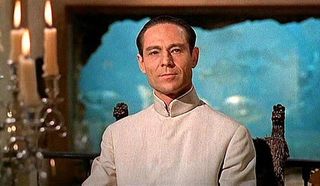
Dr. No
It’s a pretty minor thing that Spectre does, harkening back to James Bond’s first big screen adventure, 1962’s Dr. No. While it obviously owes a great debt to this film, it also appears that Christoph Waltz’s villainous Franz Oberhauser goes to the same tailor as the megalomaniacal madman of the title, or at least they shop at the same store, as the two wear similarly styled Nehru jackets.
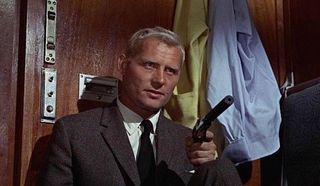
From Russia With Love
One of the best scenes in Spectre is a sprawling fistfight on a train between Daniel Craig’s Bond and Dave Bautista’s hulking henchman, Mr. Hinx. Though it encompasses more of the train, and has been appropriately adrenalized for modern audiences, this is similar to the Orient Express throwdown between the super spy and Robert Shaw’s Grant in 1963’s From Russia With Love.
CINEMABLEND NEWSLETTER
Your Daily Blend of Entertainment News
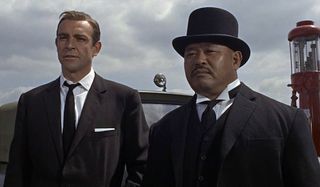
Goldfinger/The Spy Who Loved Me
Nearly mute henchmen are a favorite hallmark of the James Bond franchise, and the aforementioned Mr. Hinx shares DNA with two of the most memorable entries in the canon. Bautista’s character is a nod to Harold Sakata’s Oddjob in 1964’s Goldfinger, as he scarcely utters a sound. With his razor tipped thumbnails, he also shares DNA with Richard Kiel’s Jaws who first appeared in 1977’s The Spy Who Loved Me, as his signature weapon resembles, well, Jaws’ metallic jaws.
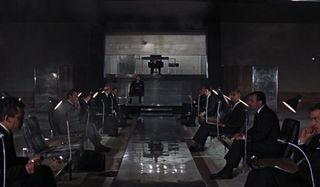
Thunderball
One of the key scenes that first appeared in the Spectre trailers is a shadowy meeting of the titular international criminal organization that takes place in an out of the way castle or manor. This is a recreation, though played with a heavier stylistic hand, of a scene that first showed up in Thunderball in 1965, and it essentially introduces SPECTRE and their nefarious dealings to the Daniel Craig years.
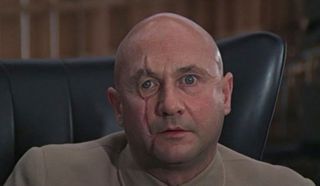
You Only Live Twice
Here’s where we give away the big twist of Spectre, one many already suspected and that has already been ruined many other places. They pull a bit of a Star Trek Into Darkness move here, and though they’ve been denying it all along, Christoph Waltz’s Franz Oberhauser is indeed Ernst Stavro Blofeld—they actually do handle the reveal as well as possible here. While 1967’s You Only Life Twice isn’t his first appearance, Waltz’s version winds up with a nasty face scar that is the signature look of Donald Pleasance’s iteration in the film.
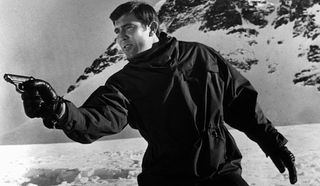
On Her Majesty’s Secret Service
One of the first Spectre images was of Daniel Craig in the snow with a gun, which is reminiscent of 1969’s On Her Majesty’s Secret Service, George Lazenby’s only turn in the role. Both films also feature a remote medical facility inexplicably located on the top of a mountain, which plays a key role, and they share a down-the-mountain chase, isolated gondola scenes, and even a dilapidated barn.
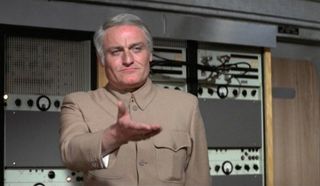
Diamonds Are Forever
In 1971, Blofeld got another run at taking over the world, this time, however, he was played by Charles Gray, who not only lacks the gnarly facial scar, he has a full head of hair, as opposed to the traditional bald look the character rocks. It may be a bit of a stretch, but with Waltz’s similar do, and lack of face wound for the vast majority of Spectre, we couldn’t help but be reminded of Gray’s Blofeld.
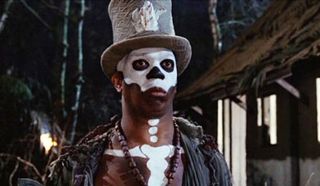
Live And Let Die
Spectre has one of the best openings of any Bond film ever. Set during massive Day of the Dead celebration in Mexico City, the action begins by tracking Bond through the crowd as he hunts his quarry. To blend in, he wears an ominous skull mask and top hat, which are evocative of those worn by the voodoo priest Baron Samedi in Roger Moore’s first shot at Bond in 1973, Live and Let Die.
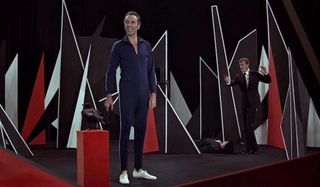
The Man With The Golden Gun
Roger Moore chasing Christopher Lee’s villain Francisco Scaramanga through a demented funhouse of mirrors in The Man with the Golden Gun in 1974 is one of the most visually distinctive moments in the entire franchise. This scene is alluded to in Spectre when Bond must race through the derelict skeleton of the bombed-out MI6 building during the climactic moment.
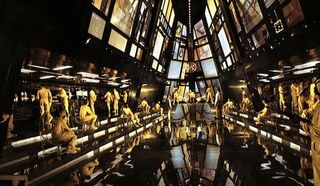
Moonraker
In 1979, Moonraker took James Bond somewhere he’d never been, and has never been since: outer space. While Spectre doesn’t go quite that far, when we finally see Oberhauser’s lair in the middle of the African desert, there is a sweet control room that looks eerily similar to the one from the earlier film—it certainly has a retro futuristic air that pictures technology as imagined by an earlier generation.
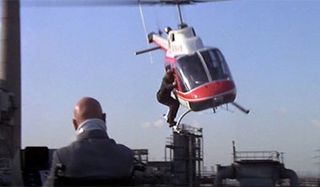
For Your Eyes Only
Part of the opening of Spectre involves an epic helicopter sequence where James battles his enemies, perches precariously on the aircraft’s skids, and even dangles from an open door in an attempt to avoid plummeting to his death. Much of this action is directly inspired by a similar scene in For Your Eyes Only in 1981 where Roger Moore performs a similar aerial dance.
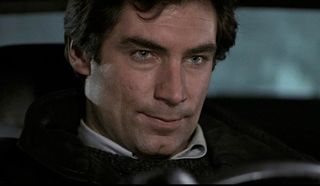
The Living Daylights
Both Spectre and Timothy Dalton’s first go round as Bond, 1987’s The Living Daylights, both go down partially in Tangiers, but it’s really more of an aesthetic similarity that binds the two. Though it ultimately didn’t stick, and people tend to remember him as a lesser Bond, Dalton’s version was darker and grittier than earlier iterations, especially following hot on the heels of Roger Moore’s take. They went a different direction with Pierce Brosnan, but in Dalton, you can see the groundwork for Craig’s version of the iconic character.
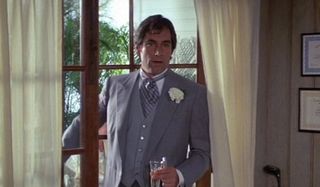
License To Kill
Much like his counterpart in Spectre, Dalton’s second time in the James Bond role sees his agent get grounded by his superiors, ordered to stand down, but instead he goes rogue, taking matters into his own hand and kicking some ass on the side. James has always had a bit of a rebellious streak, playing by his own rules and whatnot, but these are two of his most openly defiant moments. Hell, here he even gets his license to kill revoked. That has to sting, but it doesn’t, you know, stop him from killing or anything.
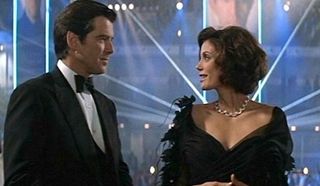
Tomorrow Never Dies
One of the big action set pieces in Spectre involves James behind the wheel of an appropriated airplane, chasing some bad guys down a mountain in the snow. While they’re very different scenes, Pierce Brosnan blasting away at a snow-bound Russian arms bazaar in cockpit of a jet in Tomorrow Never Dies, calls this moment to mind. Spectre also includes a role that is almost identical to Terri Hatcher’s in the earlier film. Monica Bellucci shows up for little other reason to have sex with James and disappear from the plot entirely. At least Hatcher’s character has closure, sure, she dies, but we never do learn what happened to Bellucci—she’s supposed to go with Felix, but that’s the last we hear of her—and the dangling thread is never resolved.
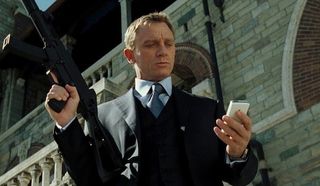
The Daniel Craig Bond Movies
This entry is the most obvious. Spectre closely follows Skyfall, and in fact, M’s death from that film serves as the impetus for the action this time around. The Daniel Craig films have always felt at least somewhat separate from the rest, existing as their own thing, like a soft reboot. While there have always been connections between his films, the latest endeavor feels very much like the culminating chapter.
Spectre comes together to not only reference the earlier movies, but goes to great lengths to show that Casino Royale, Quantum of Solace, and Skyfall are threaded more closely together than we ever suspected. We see images of familiar faces like Vepser Lynd and Le Chiffre pop up all over the place, Mr. White from Quantum of Solace is integral to the story as his daughter is one of the main characters, and we flash back to Silva from Skyfall. These are just a few of the ties between the films, and like I said, Spectre watches very much like a conclusion to the saga.
Most Popular






